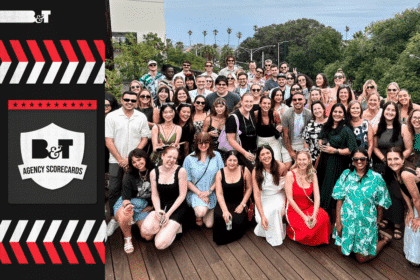Earlier in the week B&T took a look the reasonings behind Microsoft’s $A35 billion take over of LinkedIn. Today, Doug Laney, chief data officer from Gartner, says there’s really only one reason and that’s the staggering amount of data it will provide…
Throughout the day yesterday after the deal was announced we listened to financial and market analysts speculate about the announced acquisition of LinkedIn by Microsoft. Their ruminations ranged from: “I don’t see how this service is worth $26B dollars,” to “Microsoft clearly wants LinkedIn cloud capabilities,” to “Microsoft is finally in the social media business,” to “We’ll see what kind of technology synergies there are.”
All of these speculations totally missed the mark. It’s all about the data!
Content is King
It’s no surprise when any cash-laden company today makes an information play. This is in line with IBM acquiring The Weather Co last year (See Gartner analysis: IBM Storms Information, IoT Markets by Buying The Weather Company) and Facebook acquiring WhatsApp the year before. Not that this is a copycat move, but Microsoft clearly realizes it’s a bit late to the information products party. Sure it has the languishing and relatively unknown Azure Data Marketplace, but not access to a massive and continually fed set of global market, employment, and industry topic content. And while I’m not sure what degree of monetizable content Microsoft pulls from Bing searches, it’s certainly a fraction of the search and Gmail data Google has in its content cofers.
What makes the most sense about this announcement is the untapped value of all that content, including “social graph” the linkages and insights. The biggest challenge likely will be whether Microsoft is or can be positioned quickly enough to monetize all this content. Information monetization requires all the same mechanisms and processes as monetizing any kind of asset. But the rewards can be far greater due to some of the unique characteristics of content: Compared to other kinds of assets, information assets offer the benefits of non-depletability, low creation costs (especially when users are creating content for free, i.e., every social media company), low inventory costs, low distribution costs, low repackaging costs, and scant regulations (especially in the US). And this content directly feeds other monetizable assets – apps that rely on collaboration around contact, which will be facilitated and extended within and beyond the enterprises Microsoft serves.
Sure, Microsoft is trying to overcome a couple of stumbles with social media, and sure there may be some mutually leveragable technologies and analytics from the combined companies. Examples already suggested by Microsoft and LinkedIn made it clear they are already thinking about application-level linkages. And while this will take time to execute upon, both companies have the requisite skills to do so.
But that’s not at all what this deal is about. Did we mention already? It’s all about the data.
What kind of data are we talking about here? Some LinkedIn stats compiled by Expanded Ramblings:
- 433 million worldwide users
- 128 million US users (which is more than the current number of individuals employed in the US)
- 39 million students and recent graduate users
- 33 million corporate pages
- 2 new LinkedIn members per second
- Presence in 200 countries and territories
- 45 billion member pageviews per quarter (Q1 2016), up 22% since Q1 2015
- 45,000 standard skills listed
- 1 billion + endorsements
- Over 8 per cent of Americans use LinkedIn during any day
- Over 1 million professional post publishers
- Over 3 million long-form posts to-date (130,000 per week)
- 19.7 million SlideShares
$26.2 billion sure sounds like a hefty sum–a marathon stretch of cash to be precise. But is $60.51 per user excessive? Sounds like a good deal, especially when compared to the value investors placed on each Facebook user ($80.95) and each Twitter user ($101.70) at their last liquidity events. Ostensibly, most LinkedIn users publish less content, hence the “discount”.
What can Microsoft do with all that information?
Thus far, LinkedIn reports it has generated revenue from this content in just three ways: talent solutions (65 per cent of revenue), marketing solutions (18 per cent of revenue), and premium subscriptions (17% of revenue). Imagine the other ways Microsoft could monetize this content outside the limited HR space, up to and including giving data brokers like Dun & Bradstreet a run for its money. The business insights buried LinkedIn data are like no other.
But will Microsoft be allowed to leverage LinkedIn content in new and innovative ways? Short answer: Yup. Long answer: LinkedIn stated terms and conditions are pretty clear (just like WhatsApp’s and every other social media company), stating that it can do almost anything it wants with your content, including transfer it. As LinkedIn’s user agreement reads:
3.1. Your License to LinkedIn
As between you and LinkedIn, you own the content and information that you submit or post to the Services and you are only granting LinkedIn the following non-exclusive license: A worldwide, transferable and sublicensable right to use, copy, modify, distribute, publish, and process, information and content that you provide through our Services, without any further consent, notice and/or compensation to you or others.
So Microsoft will be limited only by its imagination. Oh, and an ability to execute. It must also tread carefully. Toeing “the creepy line” would be ill-advised. Monetization methods which could alienate corporate users or violate regional PII regulations will result in platform abandonment nearly as rapidly as teens jump from one messaging app to another in today’s consumer world. An opt-in model that respects its participants, or involves an obvious quid-pro-quo, will have greater long term B2B value.
What’s the big deal with monetizing information anyway?
According to Gartner research, companies in the information product business have a 4-5x higher market-to-book value than the average company. (Actually the ratio is what’s called aTobin’s q). And thankfully for info product companies, information isn’t considered a balance sheet asset per antiquated accounting regulations (GAAP), so they don’t have to report it. In short, investors looooooove information product companies. They also love companies that leverage information to the hilt. Information savvy companies, according to our research, warrant a 2-3x higher q value than average.
As a result, IT and business leaders around the world are quickly coming to the realization that they need to stop gazing at their own navels, and are recognising the multifaceted benefits of exogenous data — data from partners, suppliers, customers, social media, open data, syndicated data, and even harvested web content. Curating all this information involves first identifying who’s got what, then determining how to assess its economic potential. Then having the chops to improve marketing and sales, improve business performance, reduce risks, develop new products and services, and/or license, barter or trade the data with others.
So smart technology companies with a legacy of hardware, software and/or services will be furiously forming alliances with or looking to acquire data brokers and other purveyors of highly monetizable information.
As our Gartner colleague Tom Austin quipped recently: “In a world of smart machines, content is the new code base.”
This article is republished with permission from Gartner








